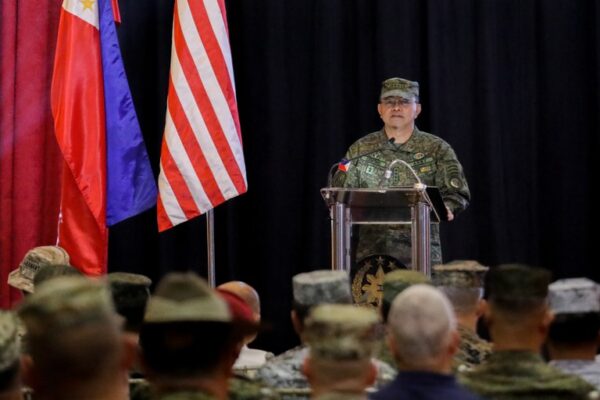
Malaysia’s Mahathir says Russia may take nuclear option
The world is facing the grim prospect of a nuclear war as the Ukrainian conflict drags on, a former Asian leader has warned. “I don’t think you can make Russia surrender,” said former Malaysian Prime Minister Mahathir Mohamad about the ongoing Ukraine war on Friday – the second day of the Future of Asia conference hosted by the Nikkei news group in Tokyo. “They will fight to the end, and in desperation they may resort to the use of nuclear weapons,” said the former statesman who will be 98 in July, adding that not only Ukraine and Russia, but “the whole world will suffer.” Mahathir served as Malaysia’s prime minister from 1981 to 2003 and again from 2018 to 2020. “Nuclear war is the worst kind of war because of the extent of destruction it causes,” he said, reflecting on the end of World War II when two atomic bombs were dropped on Japanese cities of Hiroshima and Nagasaki in 1945. A summit of Group of Seven (G7) of the world’s most developed nations was held in Hiroshima last week. “It seems that G7 countries went to Hiroshima trying to persuade the Global South that they should support the West’s efforts in the Ukraine war,” Mahathir said. The Global South is a term generally used for less developed countries in Latin America, Africa, Asia and Oceania, as opposed to more prosperous nations in the Global North including North America, Europe, and Australia, as well as several rich Asian countries like Japan, South Korea and Singapore. “We should not get involved in wars,” the former leader said before criticizing what he called “the mindset of some countries.” “Global North thinks that war is a solution to conflicts between nations,” Mahathir said. “Russia and the West were partners in the war against Germany,” he said, “but immediately after the war the West decided that their new enemy is Russia so they set up NATO.” ‘World government’ The rivalry between the world’s two superpowers China and the U.S. once again was highlighted at the Future of Asia event, in its 28th year this year. Sri Lanka’s President Ranil Wickremesinghe said on Thursday that his country “welcomes the G7’s announcement that they are prepared to build a stable and constructive relationship with China.” Singapore Deputy Prime Minister Lawrence Wong went further adding: “Any attempt either to contain China’s rise or to limit America’s presence in the region will have few takers. Nobody wants to see a new cold war.” Former Malaysian Prime Minister Mahathir Mohamad (right) at a Q&A session at the Future of Asia conference, May 26, 2023. Credit: RFA/Screenshot from livestream For his part, Mahathir Mohamad urged Asian countries that they “should not take sides to support either the U.S. or China.” “We should support the world that includes the U.S., China and the rest.” “We should free ourselves from the influences by the West both in the economic and political fields,” said the former leader, known for his anti-Western rhetoric. In his opinion, the United Nations as an organization needs to be restructured in order to lead global efforts in dealing with common world problems such as climate change, pandemics and consequences of wars. “We should think of a common approach to deal with world problems, through a kind of world government,” he said. Future of Asia, held by Japan’s Nikkei annually since 1995, is “an international gathering where political, economic, and academic leaders from the Asia-Pacific region offer their opinions frankly and freely on regional issues and the role of Asia in the world.” This year’s theme is ‘Leveraging Asia’s power to confront global challenges.’ Japan’s Prime Minister Fumio Kishida delivered a speech Thursday saying Tokyo is “focused on co-creating the future” with its Asian partners. Edited by Mike Firn.






